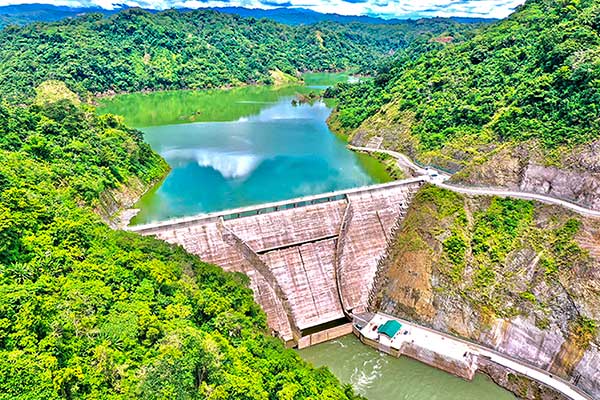
By Rjay Zuriaga Castor
Aboitiz InfraCapital’s PHP 8.45-billion bulk water supply proposal for Iloilo City and province is now in jeopardy after the National Irrigation Administration (NIA) formally rejected a critical component of the project, citing conflicts in development priorities and existing agreements.
In a letter dated March 31 obtained by Daily Guardian, NIA Administrator Eduardo Guillen told AIC First Vice President Francis David Roque that the agency cannot proceed with the proposal due to misalignment with NIA’s development plans.
“NIA is unable to move forward with the Unsolicited Proposal as it is not aligned with the NIA’s comprehensive development plan and poses a conflict with our existing agreement with the Asian Development Bank (ADB),” the NIA letter reads.
Guillen pointed out that they have an existing Transaction Advisory Service (TAS) Agreement with the ADB, which was signed in September 2024.
Through this collaboration, ADB provides NIA with technical assistance and project preparation support for infrastructure developments to be financed through Public-Private Partnerships (PPP), without cost to the agency.
The partnership is designed to ensure that all PPP projects are competitively procured and both technically and financially sound.
Projects under the TAS agreement include the development of floating solar power systems on reservoirs and irrigation canals, as well as the delivery of bulk water supply under the Jalaur River Multipurpose Project Phase II (JRMP Il).
JRMP II, the first large-scale water reservoir outside Luzon, has a bulk water component designed to provide approximately 86 million liters per day to meet the commercial and industrial needs of Iloilo.
AIC’s bulk water supply proposal aims to supply 80 million liters of potable treated water per day over a concession period of 33 years. The project is valued at PHP 8.45 billion
Under AIC’s proposed model, a Bulk Raw Water Intake Facility (BRWF) would be developed to sell treated water to Iloilo’s water districts.
The firm emphasized in its proposal the growing unmet demand for water in the region, arguing that a user-pays model would be more sustainable and responsive.
But Guillen argued that AIC’s proposal would require NIA, as the agency that grants bulk water rights, to make fixed “Availability Payments” to AIC in exchange for the construction and eventual transfer of assets for a BRWF.
Daily Guardian has reached out to AIC for a comment, but they have yet to respond as of writing.
Earlier this January, Iloilo City’s Bids and Awards Committee resolved to accept AIC’s proposal to construct and operate the Iloilo Bulk Water Supply Project—approval that came after months of delay due to the proposal’s complex contractual structure.
The Jalaur Dam proposal is a crucial pillar of AIC’s broader plan to develop the Iloilo Bulk Water Supply Project, which envisions supplying 80 million liters of potable water per day over a 33-year concession under Build-Own-Operate (BOO) and Build-Lease (BL) agreements with the city and provincial governments.
The treated bulk water would be sold directly to local government units (LGUs), who would then act as intermediaries, reselling the water to distributors and other buyers.
But the structure of the deal has raised red flags, especially with regard to the financial obligations it imposes on the LGUs, according to sources privy with the proposal.
AIC’s offer includes an “availability fee,” which would require the provincial government to cover the cost of the water capacity even if no buyers are found.
This obligation means that taxpayers’ money could be used to pay for the water, creating a significant contingent liability for the province.
The proposed arrangement diverges from traditional PPPs, where the private entity usually assumes the financial risk of finding buyers.
In the case of AIC’s proposal, that burden is placed on the LGUs, which are not equipped to manage water distribution operations. This setup could strain the province’s budget, potentially diverting funds away from other critical services.
WATER PRICE IMPACT
One red flag seen in the proposal is the potential impact on water prices.
The proposed rate of PHP 51 per cubic meter is a dramatic increase from the current rate of PHP 20 per cubic meter for the first 10 cubic meters used by residential consumers.
The hike could lead to an additional PHP 30 or more per cubic meter, significantly raising the cost of water for Iloilo residents.
In September 2024, Iloilo City Councilor Atty. Frances Grace Parcon, chair of the Committee on Rules, Styles, and Justice, flagged potential legal and financial risks to the city government under Aboitiz’s plan.
Parcon pointed to contract penalties that could be imposed on the city if water rights were not secured, which led her to reject a resolution authorizing Mayor Jerry Treñas to sign a Letter of Intent (LOI) with AIC.
“Instead of benefiting consumers, this would burden them. We may have a large water supply, but it will be expensive,” Parcon said, noting the lack of proper documentation and the proposed PHP 51.00 per cubic meter rate—more than double the PHP 22.00 per cubic meter charged by Metro Pacific Iloilo Water.






















